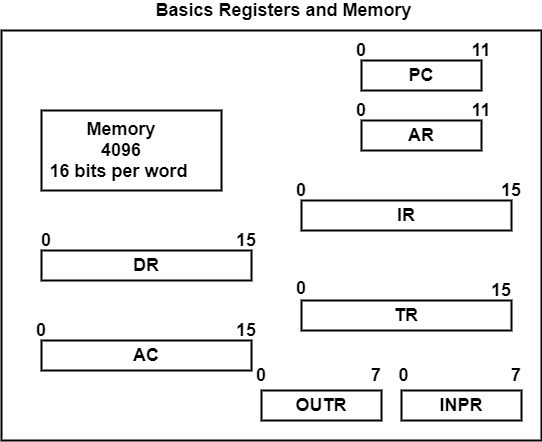
 Data Structure
Data Structure Networking
Networking RDBMS
RDBMS Operating System
Operating System Java
Java MS Excel
MS Excel iOS
iOS HTML
HTML CSS
CSS Android
Android Python
Python C Programming
C Programming C++
C++ C#
C# MongoDB
MongoDB MySQL
MySQL Javascript
Javascript PHP
PHP
- Selected Reading
- UPSC IAS Exams Notes
- Developer's Best Practices
- Questions and Answers
- Effective Resume Writing
- HR Interview Questions
- Computer Glossary
- Who is Who
What are Computer Registers in Computer Architecture?
Computer registers are high-speed memory storing units. It is an element of the computer processor. It can carry any type of information including a bit sequence or single data.
A register should be 32 bits in length for a 32-bit instruction computer. Registers can be numbered relies upon the processor design and language rules.
The instructions in a computer are saved in memory locations and implemented one after another at a time. The function of the control unit is to fetch the instruction from the memory and implement it. The control does the similar for all the instructions in the memory in sequential order.
A counter is needed to maintain a path of the next instruction to be implemented and evaluate its address. The figure shows the registers with their memories. The memory addresses are saved in multiple registers. These requirements certainly state the use for registers in a computer.

The following table shows the registers and their functions.
| Register Symbol | Number of Bits | Register Name | Function |
|---|---|---|---|
| OUTR | 8 | Output register | OIt holds output character. |
| INPR | 8 | Input register | It holds input character. |
| PC | 12 | Program Counter | It holds the address of the instruction. |
| AR | 12 | Address Register | It holds an address for memory. |
| DR | 16 | Data Register | It holds memory operand. |
| AC | 16 | Accumulator | It’s a processor register. |
| IR | 16 | Instruction Register | It holds an instruction code. |
| TR | 16 | Temporary Register | It holds temporary data. |
The description for each of the registers determined in the figure is as follows −
- The data register holds the operand read from the memory.
- The accumulator is a general-purpose register need for processing.
- The instruction register holds the read memory.
- The temporary data used while processing is stored in the temporary register.
- The address register holds the address of the instruction that is to be implemented next from the memory.
- The Program Counter (PC) controls the sequence of instructions to be read. In case a branch instruction is detected, the sequential execution does not arise. A branch execution calls for a transfer to an instruction that is not in sequence with the instructions in the PC.
- The input register (INPR) and output register (OUTPR) are the registers used for the I/O operations. The INPR receives an 8-bit character from the input device. It is similar to the OUTPR.

